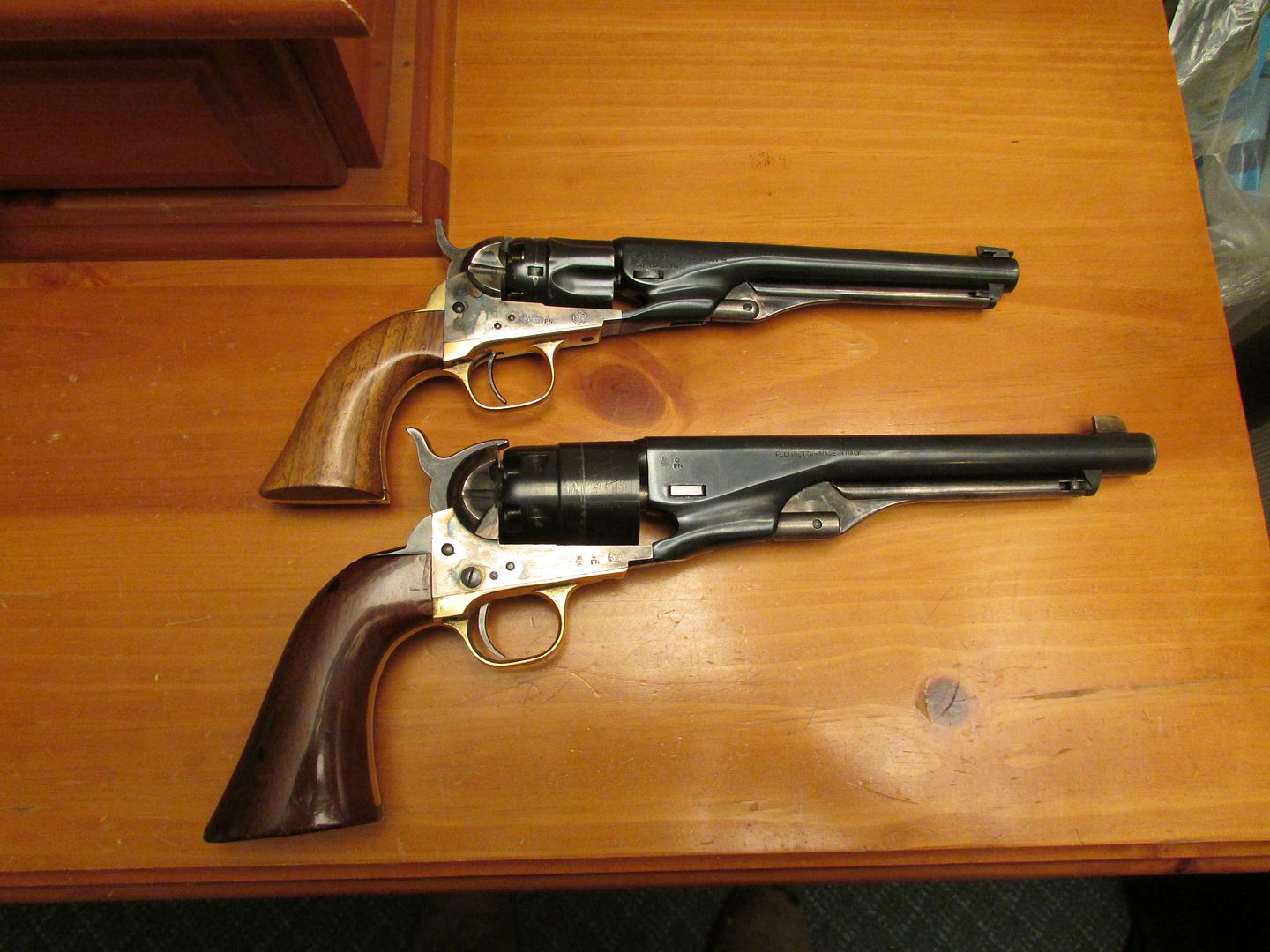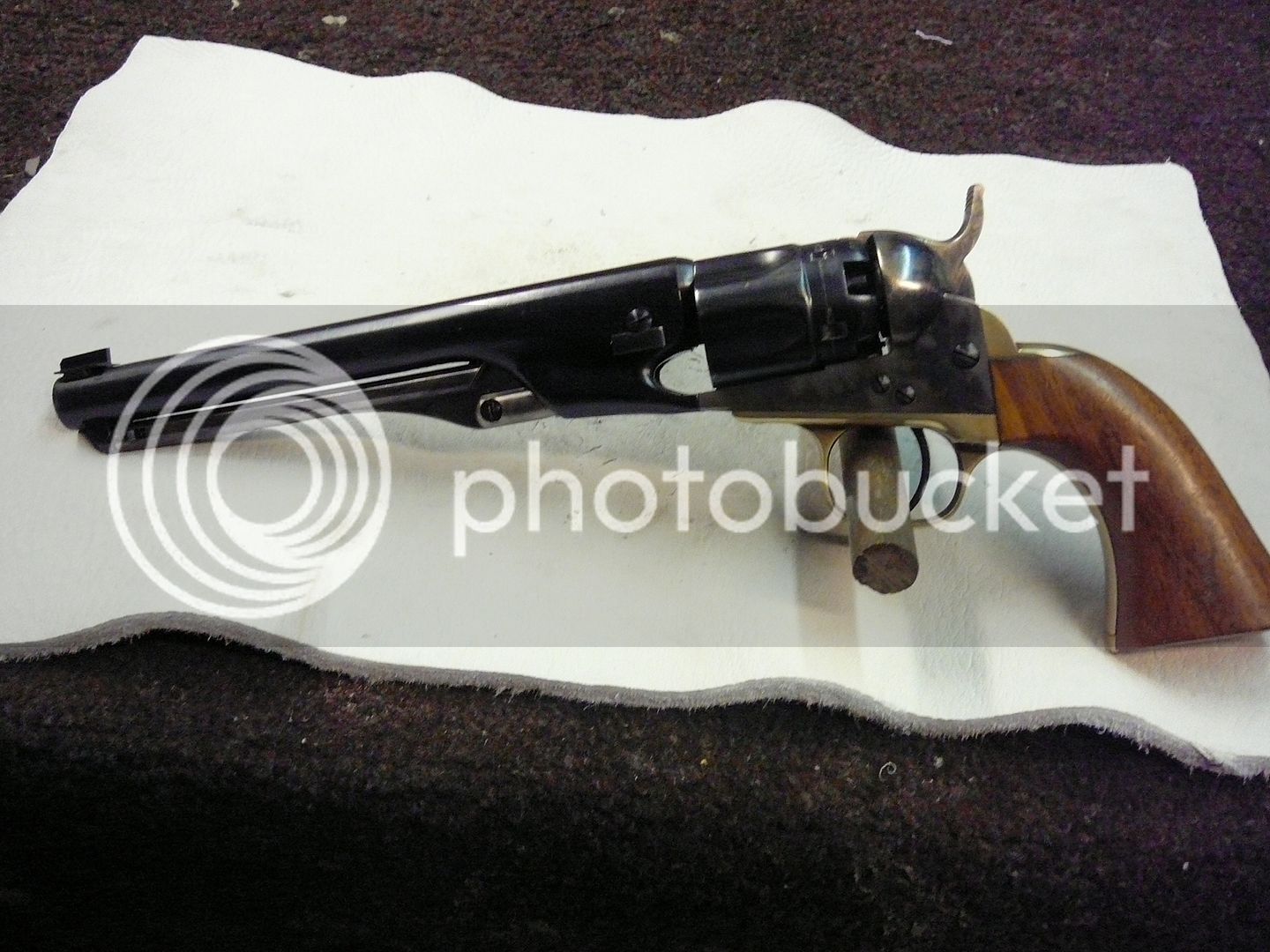- Joined
- Jan 31, 2009
- Messages
- 13,450
- Reaction score
- 7,858
It came home! 
Tore it down, cleaned it up, miked it out and reassembled with lithium greaase. Installed Tresco nipples. Thirty grains under .41 ball pretty much fill the chambers. The chambers are .403 and rounded on the lip so the balls swage in instead of shaving a ring. Groove diameter is .401.
Getting the feel for it this afternoon bouncing cans around the yard.
https://imgur.com/a/lYOZY
Tore it down, cleaned it up, miked it out and reassembled with lithium greaase. Installed Tresco nipples. Thirty grains under .41 ball pretty much fill the chambers. The chambers are .403 and rounded on the lip so the balls swage in instead of shaving a ring. Groove diameter is .401.
Getting the feel for it this afternoon bouncing cans around the yard.
https://imgur.com/a/lYOZY
Last edited by a moderator:






